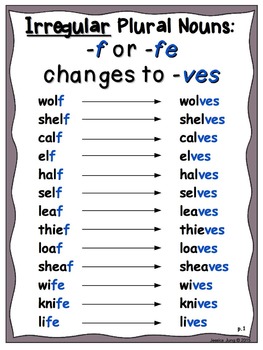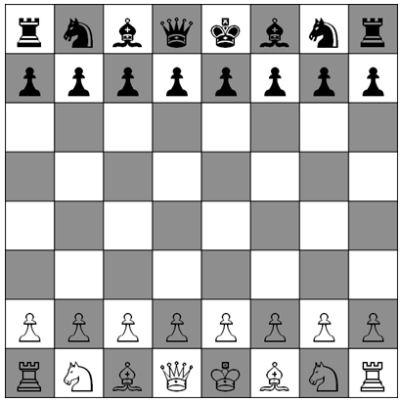Home › UK Rules › A-Z List of Sports › Chess Game
No matter whether you are a complete newbie to chess, or looking to develop your game, this is the ideal place to start.
The information in this section outlines all the strategies and tactics of chess rules in a simple format that's easy to understand.
CHESS BOARD RULES: A simple guide explaining the basic chess board rules and how to play the game.
Chess is the most popular board game played worldwide.
Schools and 3,000 children, showed higher classroom grades in both English and Maths for children involved in chess. In schools, chess often serves as a bridge, bringing together children of different ages, races and genders in an activity they can all enjoy. Chess helps build individual friendships and also school spirit when children compete. The rules of chess (also known as the laws of chess) are rules governing the play of the game of chess. While the exact origins of chess are unclear, modern rules first took form during the Middle Ages. The rules continued to be slightly modified until the early 19th century, when they reached essentially their current form. Chess-like games played in India in the 6th century. For much of that time, the rules varied from area to area. The modern rules first took form in Italy during the 13th century, giving more mobility to pieces that previously had more restricted movement (such as the queen and bishop). Such modified rules entered into an accepted form during. Chess Rules Ages 10 & Up. For 2 Players Black Play Pieces: Ivory Play Pieces: Pawn Knight Bishop Rook Queen King Contents: Game Board, 16 ivory and 16 black Play Pieces Object: To threaten your opponent’s King so it cannot escape.
Countries with the highest ranking chess players are Russia, China, and the USA.
How do all the different chess pieces work? The chessmen pieces have different board movements with differing powers.
Checkmate is the ultimate goal of every chess player. The battle of wits between two evenly matched armies takes place on a chequered board. Once you understand these essential topics you will soon start playing the game of chess.
Brief History of Chess

There is some vagueness to the exact origins of chess. Most experts believe the game evolved from early board games played in India. The modern game of chess became popular in Europe from the 15th century onward.
Chess Game Rules
Aim of Chess Game
There is one simple aim in chess games rules. Each player tries to capture and 'kill' the king chess piece of their opponent. Capturing or killing the king is a term called 'checkmate'.
At the same time players should use their skills to protect their own pieces from capture. Checkmate occurs if the king is in a position to get 'captured'. That means the top ranking chess piece is in check and unable to escape from the capture of your army.
Chess Players
Two single opponents contest a game of chess. Players should sit on opposite sides of the chess board facing their challenger.
Chess Equipment
Playing the game requires only a few pieces of equipment. You need a chess set and a chess board.

The chessboard divides into 64 squared sections of alternating colours called ranks and files. The squares are often black and white or they can be light and dark shades instead.
Standard chess sets contain 32 pieces which are two sets of coloured chessmen. As a rule there will be one set of playing pieces coloured black and the other set will be all white.
A set of 16 pieces contains 1 king, 1 queen, 2 bishops, 2 knights, 2 rooks, and 8 pawns. Both players use one full set of 16 pieces each (either black or white).
Buying Chess Sets
Are you looking to buy a top quality chess set? If so, Kaoori Chess is one of the largest online stores. They provide a variety of product options, including unique chess sets, Staunton chess set, as well as themed chess set options.

Starting a Game of Chess
Set up the chess board so that each player has the white or light colour square at the bottom right-hand side. You can then arrange the chess pieces on to the two back rows (ranks) before you start the game.
The 8 squares of the second row (rank) get filled with 8 pawns. The rooks (aka castles) go in the left and right corners. The knights get positioned next to the rooks and then the bishops follow in the next square.
The queen chess piece always goes on her own matching colour square. That means a white queen would go on white and a black queen would go on a black square. The king piece goes on the remaining square in the back row (see chess board diagram).
Chess rules and regulations say the player with white pieces always makes the first move. So, players need a way to determine who will get the choice of white or black pieces. You can flip a coin or have one player guess the colour of a pawn hidden in the other player's hand.
Once white has made the first move, black follows, and then white again. Players alternate turns to move one piece each until the game finishes.
Basic Moves of Each Chess Piece
This section explains the fundamental moves of chess. You need to understand the basic chess rules for moving your pieces to play the game. Most chess grandmasters allocate more power to chess pieces with greater mobility on the board.
Chess Piece Mobility:
- Pawn: As a rule pawns can only move one square forward at a time. The exception occurs on their first move when they can move one or two squares. They capture enemy pieces by moving one square forward in a diagonal direction.
- Rook: Rooks can move any number of squares, up and down and side to side.
- Knight: The two knights can only move only in an L-shape. That means any combination of one square up and two over, or two squares over and one down in any direction.
- Bishop: Both of the two bishops can move any number of squares in a diagonal direction.
- Queen: Queens can make the same moves as all other pieces except the knight. That means it can move any number of squares along ranks, files, and diagonals.
- King: Kings can only move one square at a time but in any direction.
General Rules and Regulations of Chess
Chess Rule Pawn Promotion
The chess rule promotion applies to pawns. Each pawn has a special ability to gain promotion to the role of any other piece. But, the pawn must reach the other side of the board before it can become another chess piece.
Note: It is not true that pawns may only get exchanged to a piece that gets captured. Most players exchange a pawn to a queen because of its superior mobility on the board.
Chess Rule En Passant
En passant also applies to pawns. What if a pawn moves out two squares on its first move and lands to the side of an opponent's pawn? In effect it has jumped past the other pawn's ability to capture it.
That pawn then has the option of capturing the first pawn as it passes by. You must make this move immediately after the first pawn has moved past.
Chess Rule Castling
Chess game rules and regulations have a special move called 'castling'. This move means you can make two (2) important steps in one move. You can try to get your king to safety and move your rook from the corner and into the game.
Chess Rules For Kids Pdf
You can only castle in chess when it is your turn. The king moves two squares to one side and the rook jumps from that side corner and next to the king on the opposite side. But, these conditions must apply for castling to take place:
- It must be the first move of that particular king
- It must be the first move of that particular rook
- There must be no pieces between the king and that rook
- You cannot castle if your king is in check or moves into check
When you castle in one direction the king finishes closer to that side of the board. The chess term for that is castling kingside. Castling to the other side is castling queenside. The king always moves two squares only any time you make the castling move.
Chess Rules For Kids Pdf Free
Check and Checkmate to Win at Chess
The main purpose of chess is to checkmate your opponent's king. This only occurs when the king gets put into check and cannot escape it. The game is over if a king cannot escape checkmate.
Chess board rules allow three ways for a king to get out of check:
- Make a legal move to get out of the way (excluding castling).
- Block the check using another chess piece.
- Capture the piece of your opponent that is threatening your king.
Draw or Stalemate
Not all chess games end with an outright winner. Sometimes the game finishes in a draw. There are 5 reasons why a chess game may end in a draw:
- The position of play reaches a stalemate. This occurs if one player has a turn to move, but his king is NOT in check and he does not have another legal move.
- Both players agree to stop playing and declare the game a draw.
- A situation where there are not enough pieces on the board to force a checkmate (e.g. a king and a bishop vs. a king).
- Players may declare a draw if the exact same position gets repeated three times (does not have to be 3 times in a row).
- If 50 consecutive moves get played and neither player moves a pawn or captures a chess piece.
Advanced Rules of Chess UK
A to Z Sports Rules and Regulation: A list of popular indoor and outdoor sport categories.
Bar Billiards Rules: A simple guide explaining how to play the friendly game of pub skittles.
Beer Pong Rules: Information on the fun indoor activity played in a wide range of venues.
Board and Card Games: All the rules and helpful tips for playing traditional games for fun.
Chess Boxing: Check out the oddball combination hybrid sport of chess and boxing.
Cribbage Rules: The basic rules of cribbage card game and terms used by the players.
Rules of Darts: Find out the basic dart board rules and regulations of darts games.
Snap Card Game: Basic rules for the classic and most popular children's card game.
Weird Sports Rules: A concise list of weird and wonderful sports games around the world.
FIDE Chess Rules PDF: [Free Download Option]
Chess Games in the News
Chess Prepares Kids for Business: Find out how learning chess helps for a career in business.
Basic Chess Rules for the United Kingdom
© 2021 | ALL RULES | CONTACT | PRIVACY | SITEMAP